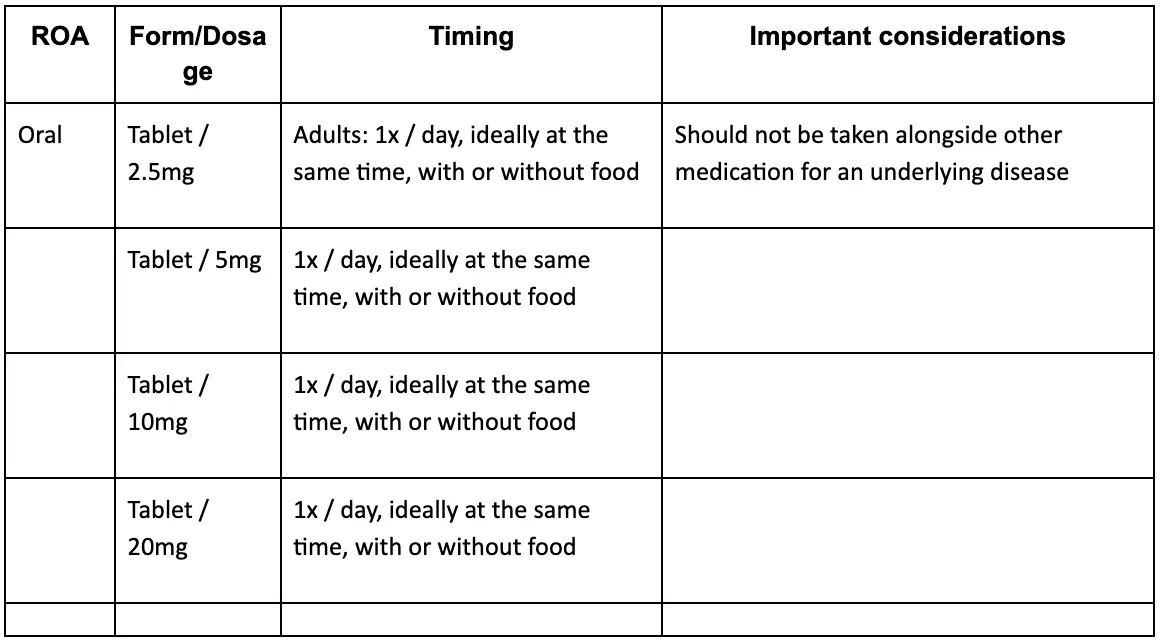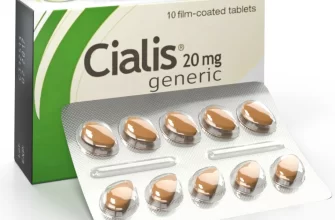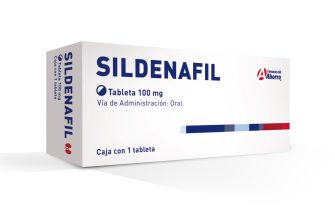For benign prostatic hyperplasia (BPH), Cialis and tamsulosin offer distinct approaches. Cialis, a phosphodiesterase-5 inhibitor, improves urinary flow by relaxing the prostate and bladder neck muscles. Tamsulosin, an alpha-blocker, targets the same muscles, but through a different mechanism. The choice depends on your individual needs and preferences, factoring in potential side effects and overall health.
Consider Cialis if you also experience erectile dysfunction (ED). It addresses both conditions simultaneously. However, Cialis’s effects on BPH symptoms may be less pronounced than tamsulosin’s in some individuals. Side effects can include headache, flushing, and nasal congestion.
Tamsulosin, on the other hand, primarily focuses on relieving BPH symptoms such as urinary frequency and urgency. Its efficacy for improving urinary flow is often considered superior to Cialis for BPH alone. Common side effects include dizziness and decreased blood pressure. Importantly, patients should discuss their medical history with their doctor before choosing either medication to minimize risks.
Your doctor will consider your age, overall health, other medications you are taking, and the severity of your BPH symptoms to determine the most appropriate treatment. A detailed medical examination will assist in a personalized decision. Regular monitoring after commencing treatment is necessary to assess efficacy and manage potential adverse events.
- Cialis vs. Tamsulosin for BPH: A Detailed Comparison
- Understanding Benign Prostatic Hyperplasia (BPH)
- Symptoms of BPH
- Diagnosing BPH
- Treatment Options for BPH
- Lifestyle Adjustments
- When to See a Doctor
- Cialis (Tadalafil) for BPH: Mechanism of Action
- Targeting Specific Muscles
- Clinical Effects & Dosage Considerations
- Comparison to Alpha-Blockers (like Tamsulosin)
- Tamsulosin (Flomax): Mechanism of Action and Effects
- Cialis vs. Tamsulosin: Efficacy in Treating BPH Symptoms
- Cialis’s Impact on BPH Symptoms
- Tamsulosin’s Role in BPH Management
- Side Effects and Potential Drug Interactions: Cialis vs. Tamsulosin
- Cialis Side Effects
- Tamsulosin Side Effects
- Choosing the Right Medication: Factors to Consider
- Long-Term Outlook and Management Strategies
- Lifestyle Adjustments for BPH Management
- Alternative or Additional Therapies
- Medication Adjustments
Cialis vs. Tamsulosin for BPH: A Detailed Comparison
Choose Cialis if you experience both urinary and erectile dysfunction symptoms. Tamsulosin targets only urinary symptoms.
Cialis (tadalafil) works by relaxing muscles in the bladder and prostate, improving urine flow. It also improves blood flow to the penis, treating erectile dysfunction. This dual action makes it a good option for men with both BPH and ED. Side effects may include headache, back pain, and muscle aches. It’s typically taken daily.
Tamsulosin, an alpha-blocker, specifically relaxes the muscles in the prostate and bladder neck, improving urine flow. It doesn’t address erectile dysfunction. Common side effects include dizziness, lightheadedness, and a runny nose. It’s usually taken once daily.
Dosage varies depending on individual needs and physician recommendations. Always follow your doctor’s instructions.
Cost differs based on insurance coverage and location. Generic options exist for both medications, potentially reducing expenses. Discuss pricing with your pharmacist.
Potential Interactions: Both medications can interact with other drugs. Inform your doctor about all medications and supplements you take. This prevents potential adverse reactions.
Ultimately, the best choice depends on your specific symptoms and health status. Consult your doctor for personalized advice and treatment tailored to your individual needs.
Understanding Benign Prostatic Hyperplasia (BPH)
BPH, or benign prostatic hyperplasia, is a common condition affecting men as they age. The prostate gland, located below the bladder, gradually enlarges, obstructing urine flow. This enlargement isn’t cancerous, but it can cause significant discomfort and health issues.
Symptoms of BPH
Common symptoms include frequent urination, especially at night (nocturia), a weak or interrupted urine stream, difficulty starting urination, and a feeling of incomplete bladder emptying. Some men also experience urinary urgency, a sudden, strong urge to urinate. Severity varies greatly between individuals.
Diagnosing BPH
Diagnosis typically involves a physical exam, digital rectal exam (DRE) to assess prostate size, and a urinalysis to rule out infection. Further testing, such as a prostate-specific antigen (PSA) blood test and uroflowmetry (measuring urine flow rate), might be necessary to rule out other conditions and guide treatment.
Treatment Options for BPH
Treatment decisions depend on symptom severity and overall health. Options include lifestyle changes like increased fluid intake and avoiding caffeine/alcohol before bed. Medications, such as alpha-blockers (like tamsulosin) that relax the bladder neck muscles, or 5-alpha-reductase inhibitors (like finasteride) that shrink the prostate, are common. For severe cases, minimally invasive surgical procedures are available.
Lifestyle Adjustments
Maintaining a healthy weight, regular exercise, and a balanced diet can help manage BPH symptoms. Additionally, regular voiding, avoiding prolonged periods without urinating, and practicing pelvic floor exercises can aid in bladder control. Speak with your doctor for tailored advice.
When to See a Doctor
Consult your physician if you experience persistent or worsening urinary symptoms. Early detection and appropriate management are crucial for minimizing long-term complications.
Cialis (Tadalafil) for BPH: Mechanism of Action
Tadalafil, the active ingredient in Cialis, primarily works by relaxing smooth muscles in the prostate and bladder neck. This relaxation reduces the urinary tract obstruction characteristic of benign prostatic hyperplasia (BPH).
Specifically, tadalafil inhibits phosphodiesterase-5 (PDE5), an enzyme that breaks down cyclic guanosine monophosphate (cGMP). Increased cGMP levels lead to smooth muscle relaxation. This mechanism is similar to its role in erectile dysfunction treatment, but its impact on BPH focuses on urinary improvements.
Targeting Specific Muscles
The precise muscles affected are the smooth muscles within the prostate and the bladder neck. By relaxing these muscles, tadalafil facilitates easier urine flow and reduces symptoms like urinary frequency, urgency, and hesitancy.
Clinical Effects & Dosage Considerations
Studies demonstrate that tadalafil significantly improves BPH symptoms. The recommended dosage for BPH is typically 5mg once daily. However, individual responses vary, and your doctor will determine the appropriate dose based on your condition and response to treatment.
Comparison to Alpha-Blockers (like Tamsulosin)
| Characteristic | Tadalafil (Cialis) | Tamsulosin (Alpha-blocker) |
|---|---|---|
| Mechanism of Action | PDE5 inhibition, leading to smooth muscle relaxation | Alpha-1 adrenergic receptor blockade, causing smooth muscle relaxation |
| Primary Target | Prostate and bladder neck smooth muscles | Prostate and bladder neck smooth muscles |
| Potential Side Effects | Headache, back pain, nasal congestion, muscle aches | Dizziness, lightheadedness, retrograde ejaculation |
Note: This information is for educational purposes only and does not substitute professional medical advice. Consult your doctor before starting any new medication.
Tamsulosin (Flomax): Mechanism of Action and Effects
Tamsulosin relaxes the muscles in the prostate and bladder neck. This is crucial for relieving urinary symptoms associated with benign prostatic hyperplasia (BPH).
Specifically, tamsulosin works by blocking alpha1-adrenergic receptors. These receptors are found in the smooth muscle of the prostate and bladder neck. By blocking these receptors, tamsulosin causes the muscles to relax, allowing for easier urine flow.
- Improved urine flow: Expect a noticeable increase in the strength and ease of urination.
- Reduced urinary frequency: You should experience fewer trips to the bathroom, especially at night.
- Decreased urinary urgency: The sudden, strong urge to urinate should lessen.
- Less straining during urination: You should find it easier to empty your bladder.
It’s important to note that tamsulosin doesn’t shrink the prostate. Its primary function is to improve urine flow by relaxing the muscles.
Potential side effects include:
- Dizziness
- Headache
- Runny nose
- Drowsiness
- Retrograde ejaculation (semen entering the bladder instead of exiting the urethra)
Always discuss potential side effects and drug interactions with your doctor before starting tamsulosin.
Remember, individual responses to medication vary. Consult your healthcare provider to determine if tamsulosin is the right treatment option for you.
Cialis vs. Tamsulosin: Efficacy in Treating BPH Symptoms
Both Cialis (tadalafil) and Tamsulosin are effective in managing benign prostatic hyperplasia (BPH) symptoms, but they work differently. Cialis relaxes muscles in the bladder and prostate, improving urine flow. Tamsulosin, an alpha-blocker, specifically relaxes the muscles in the prostate and bladder neck, also improving urine flow and reducing urinary symptoms.
Cialis’s Impact on BPH Symptoms
Studies show Cialis effectively reduces BPH symptoms like frequent urination, weak stream, and nighttime urination. Its dual action on both the prostate and the bladder contributes to this improved urinary function. Importantly, many men also experience improved sexual function as a secondary benefit.
Tamsulosin’s Role in BPH Management
Tamsulosin primarily targets the prostate and bladder neck muscles. This targeted approach leads to significant improvements in urinary symptoms for many men with BPH. However, unlike Cialis, it doesn’t directly affect sexual function.
Choosing the Right Medication: The best choice depends on individual needs and preferences. If you experience both urinary problems and erectile dysfunction, Cialis might be a suitable option, offering dual benefits. If urinary symptoms are your primary concern and sexual function isn’t affected, Tamsulosin may be a better choice.
Always consult your doctor to determine the most appropriate treatment for your specific case. They will consider your medical history and symptom severity to recommend the best course of action. They can also explain potential side effects and drug interactions.
Side Effects and Potential Drug Interactions: Cialis vs. Tamsulosin
Cialis and Tamsulosin treat Benign Prostatic Hyperplasia (BPH), but differ significantly in mechanism and side effects. Choosing the right medication depends on individual needs and health profile.
Cialis Side Effects
- Headache: A common side effect, usually mild.
- Back pain: Can occur, often manageable with over-the-counter pain relief.
- Muscle aches: Similar to back pain, typically resolves without intervention.
- Facial flushing: Temporary redness of the face; usually subsides quickly.
- Nasal congestion: Stuffiness or runny nose; may be temporary.
- Visual disturbances: Changes in color vision or blurred vision; report to your doctor immediately if persistent.
- Serious side effects (rare): Heart attack, stroke, sudden hearing loss. Seek immediate medical attention if experienced.
Cialis interacts with nitrates (used for chest pain) and certain antifungals. Always inform your doctor about all medications you are taking.
Tamsulosin Side Effects
- Dizziness: Can occur, especially when standing up quickly. Rise slowly to minimize this.
- Lightheadedness: Related to dizziness; avoid activities requiring alertness until effects subside.
- Fatigue: Feeling tired; may resolve as the body adjusts to the medication.
- Nasal congestion: Similar to Cialis, typically mild and temporary.
- Retrograde ejaculation: Semen entering the bladder instead of exiting the penis; often asymptomatic.
- Rare but serious side effects: Priapism (prolonged erection), allergic reactions.
Tamsulosin can interact with other medications, including some blood pressure medications. Complete transparency with your physician about your medication regimen is crucial.
- Discuss all medications with your doctor before starting Cialis or Tamsulosin.
- Report any concerning side effects to your doctor promptly.
- Follow your doctor’s instructions carefully regarding dosage and administration.
This information is not a substitute for professional medical advice. Always consult your doctor before making decisions about your health.
Choosing the Right Medication: Factors to Consider
Consult your doctor. They will assess your specific symptoms and overall health to determine the best treatment option for you.
Severity of Symptoms: Cialis is primarily for improving urinary flow and addressing erectile dysfunction. Tamsulosin focuses solely on relieving urinary symptoms. If your urinary problems are mild, Tamsulosin might suffice. More severe symptoms often require a more comprehensive approach, potentially including Cialis.
Other Health Conditions: Discuss all your medical conditions with your doctor. Certain heart problems or low blood pressure may influence the choice of medication. Existing medications can also interact, so complete transparency is vital.
Personal Preferences: Cialis can improve erectile dysfunction alongside urinary symptoms, which might be a significant benefit for some men. If erectile dysfunction isn’t a concern, Tamsulosin’s simpler approach might be preferred. Discuss your priorities with your physician.
Side Effects: Both medications carry potential side effects. Cialis can cause headaches, back pain, and nasal congestion. Tamsulosin may lead to dizziness and a sudden drop in blood pressure. Weigh the potential benefits against these risks with your doctor.
Cost and Insurance Coverage: The cost of medication can vary considerably. Check with your insurance provider to determine coverage and out-of-pocket expenses. This factor may influence the practicality of one treatment over another.
Remember: This information is for general knowledge and doesn’t substitute professional medical advice. A thorough discussion with your doctor is crucial for making an informed decision.
Long-Term Outlook and Management Strategies
Regular monitoring of your BPH symptoms is key. Schedule check-ups with your doctor to discuss symptom progression and treatment effectiveness. Your doctor will assess your prostate size and urinary flow rate to track disease advancement. This allows for timely adjustments to your medication plan or consideration of alternative therapies if needed.
Lifestyle Adjustments for BPH Management
Consider incorporating lifestyle changes to support your BPH treatment. These include increasing fluid intake (especially water), but avoiding excessive liquids before bedtime. Regular exercise, a balanced diet, and weight management are also beneficial. Addressing constipation, a common issue with BPH, through fiber-rich foods or supplements can improve bladder function. Your doctor can discuss the appropriateness of these modifications for your specific condition.
Alternative or Additional Therapies
If medication alone proves insufficient, alternative treatments can be considered. These may include minimally invasive procedures like transurethral microwave thermotherapy (TUMT) or transurethral needle ablation (TUNA) to reduce prostate size and improve urine flow. Your urologist can discuss the suitability of these procedures based on your individual circumstances. In some cases, surgery might be a necessary option to manage severe BPH symptoms. The best approach depends entirely on your medical history and current health.
Medication Adjustments
The long-term use of Cialis or Tamsulosin often requires periodic reassessment. Your doctor may adjust the dosage or switch medications depending on response and side effects. Open communication with your doctor about any concerns, whether related to the efficacy of the treatment or the presence of side effects, is crucial for successful long-term management. Don’t hesitate to report changes in your symptoms or any adverse effects you experience.








